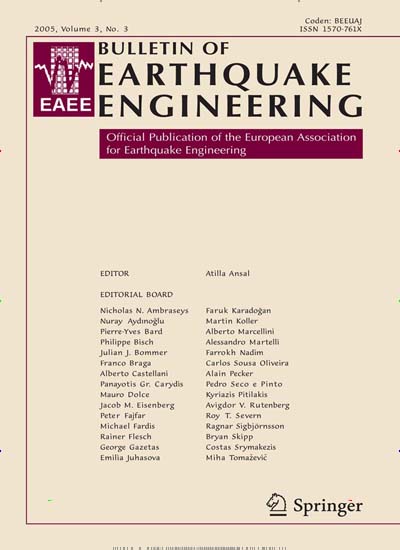A wavelet-based approach for truncating pulse-like records
Vicky Dimakopoulou, Michalis Fragiadakis & Ioannis Taflampas
Abstract
The paper discusses the fast seismic performance assessment of structures using truncated pulse-like ground motion records. It is shown that it is possible to truncate a pulse-like signal using a novel wavelet-based definition that identifies the duration of the predominant velocity pulse. The truncated time-history is still able to efficiently reproduce the increased seismic demand that near-field records typically produce. Substituting the original ground motion with the truncated signal, can significantly accelerate structural analysis and design. The truncated signal is the part of the original accelerogram that coincides with the duration of the predominant pulse, which is identified using a wavelet-based procedure, previously proposed by the authors. Elastic and inelastic response spectra and nonlinear time-history analyses for SDOF (single-degree-of-freedom) systems are first studied. Subsequently a nine-storey steel frame is examined in order to demonstrate the performance of the proposed approach on a multiple-degree-of-freedom system. The proposed approach is found very efficient for pulse-like ground motions, while it is also sufficient for many records that are not characterized as such.
Keywords: Record truncation, Effective duration, Predominant pulse, Pulse-like, Pulse index, Near-field
